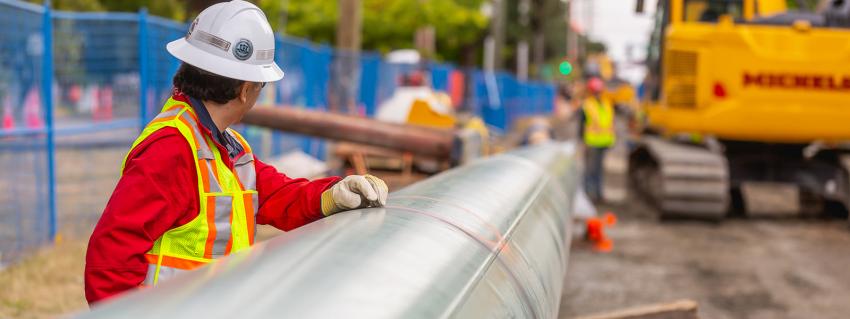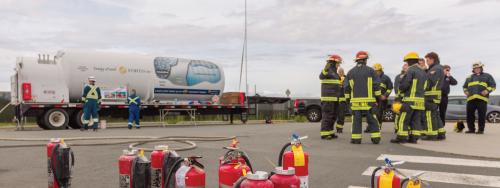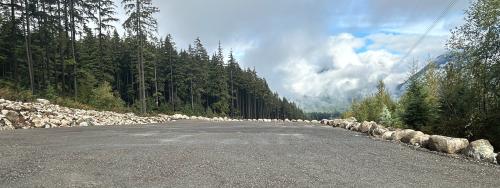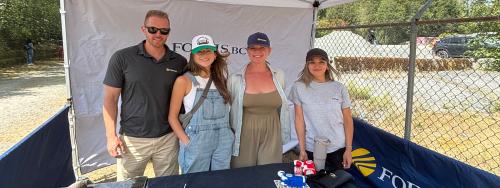As our BC communities continue to grow, there’s an increasing demand for natural gas to heat customers’ homes and cook their food. There’s also a growing interest in using natural gas as a fuel for transportation. We continually assess our existing infrastructure to identify where upgrades are needed, and to determine when to begin a new natural gas project to meet future demand.
The projects we’ve undertaken in recent years are spread across the province. The reasons we needed to do them are as varied as their locations:
- From 2018 to 2020, we replaced 20 kilometres of gas line and supporting facilities in Vancouver, Burnaby and Coquitlam to upgrade part of our natural gas line infrastructure that had been in service for more than 50 years.
- In 2018, we commissioned a new liquefied natural gas (LNG) storage tank, and new liquefaction capacity in Delta at our Tilbury facility to increase supply for cold winter months and support the growing demand for natural gas for transportation.
- The Inland Gas Upgrades project currently underway involves upgrades to 29 gas lines in the Northern, Thompson-Okanagan, Cariboo and Kootenay regions of BC to make sure they continue to provide safe, reliable service for many years to come. In many cases, the upgrades will make it possible for us to inspect the gas lines using up-to-date in-line inspection equipment. This inspection method provides detailed information about the lines, which allows us to better plan and manage our maintenance work.
- We’re planning to build 30 kilometres of new gas line in the Okanagan to strengthen our natural gas system and increase natural gas capacity to support this growing region.
Project planning and the regulatory process
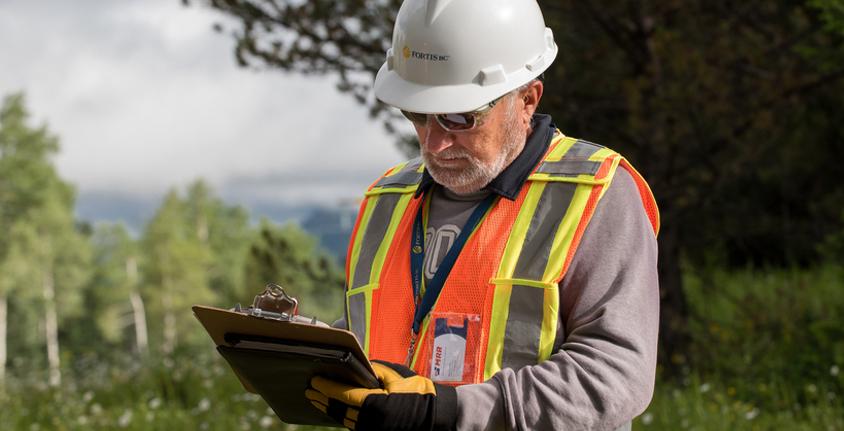
As a utility, our company is regulated by the British Columbia Utilities Commission (BCUC) and, depending on the project, approvals from various levels of government may also be required.
Fulfilling the requirements of a BCUC application is a lengthy, detailed process involving considerable research and planning, says Tony Pham, a 30-plus year FortisBC veteran and the operations manager for the Inland Gas Upgrades project. This was especially true for the Inland Gas Upgrades application, he says, because it involved describing proposed upgrades to 29 sections of gas line. “In the application we were required to establish the need for the project and the justification for making upgrades to the 29 sections of gas line,” he explains. “We also submitted a detailed assessment on the technical alternatives for each line and provided our preferred method for accomplishing each of the proposed upgrades.”
The team researched seven different technical alternatives and evaluated them against various criteria including environmental and stakeholder impacts, efficiency, ease and cost. They narrowed the alternatives down to three preferred methods to accomplish the integrity management objectives of the gas lines, then submitted their recommendation to the BCUC.
Tony adds the BCUC application included another very important requirement: confirming that engagement and consultation had taken place with community stakeholders and rights holders—including Indigenous groups, local residents, businesses and municipalities—to address their concerns. “We identified who may be impacted by the project; how they would be impacted and how we’ve either already addressed their concerns, plan to do so during construction or once construction is complete.”
Early Community Engagement
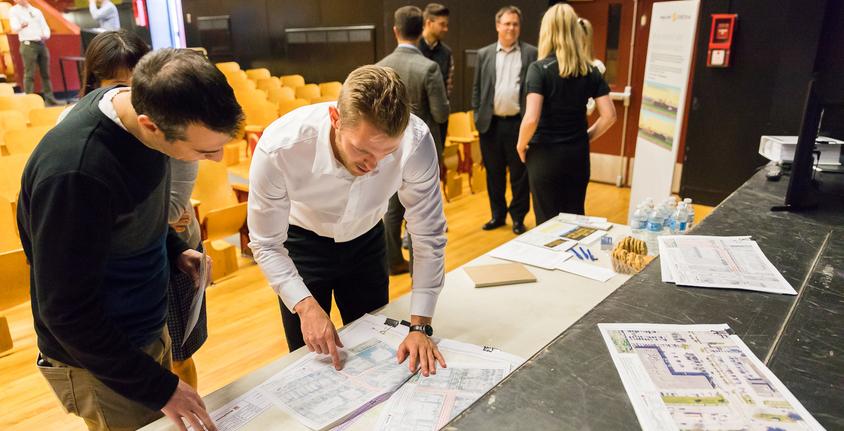
Community engagement plays a key role in determining the preferred route for a gas line, such as on our proposed Okanagan Capacity Upgrade project. When we presented our proposed route to the City of Penticton and the Regional District of Okanagan-Similkameen, they told us that part of the route passed through an area of landfill that they had planned to use in the future. We listened to their concerns and discussed alternatives. We continued to work with them until we came up with a new route that suited us both and avoided crossing the landfill.
Our community relations and external relations team are some of the first “boots on the ground” for a project, helping to identify key stakeholders and engaging with them to understand their needs and mitigate potential local impacts.
“We get involved in the planning of a major project very early on in the process,” says Blake Mansbridge, manager of community relations. “Feedback from stakeholders is very important in order to identify the preferred alternative for a project.”
For building a new gas line, the external relations team begins by assessing the various route alternatives from a community stakeholder perspective. “During our evaluation we flag things such as close proximity to properties, or environmentally sensitive areas,” says Blake. “Participating early in the project planning process helps minimize impacts to local communities.”
Once a preferred route is chosen, the team conducts a process called stakeholder mapping to identify all the stakeholders who may have an interest in the project, either based on their proximity to construction or use of facilities in the area.
The team then begins to engage the stakeholders in a number of different ways. “We have a targeted one-on-one approach for specific stakeholders who will be directly impacted by construction and a broader approach to notify the rest of the community,” says Blake.
Targeted engagement includes phone calls, emails, hand-delivered project information letters and knocking on doors. The broader community is notified of pending work through the media—print, radio and social media—and at information sessions where they can talk to FortisBC representatives and get their questions answered.
Working with the community during construction
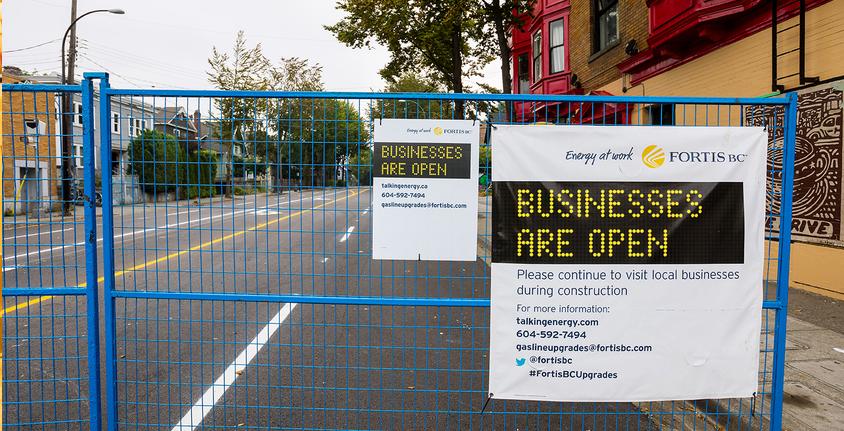
Being a good neighbour is important to us. When construction is underway, we make a great effort to lessen the impact of construction on local residents and property owners, support local community events and provide opportunities for local and Indigenous businesses to participate in the project.
Strategies to lessen the impact of construction
Consulting with municipalities and local governments early in the planning process helps the team design effective strategies, such as traffic management plans, that become an integral part of the overall project plan.
“Effective traffic management planning can include anything from drilling under a particular busy intersection to keep it open, to ensure access is maintained for nearby residents, local businesses and amenities,” Blake explains. “During work on the FortisBC Gas Line Upgrades in 2018 we drilled under a number of busy intersections, instead of cutting into them, so they would remain open to car, bike and foot traffic.”
Additional strategies to maintain access for residents and local businesses during construction can include keeping one lane of traffic open, or building a temporary access road.
Supporting the community during construction
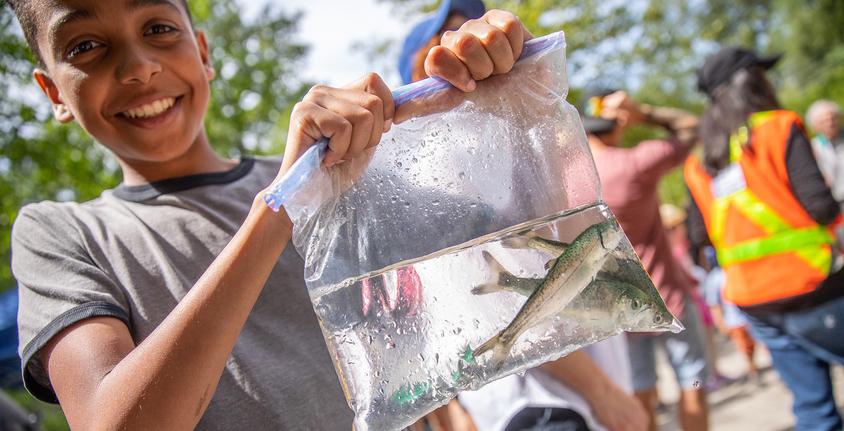
We’re committed to keeping everyone informed about our work in the community and addressing questions and concerns. One of the first things we do is establish a project phone number and email address ahead of our projects so the community can connect with us as work progresses. That contact information, as well as a website address, is frequently included on FortisBC-branded signage at project construction sites. “We take ownership of our projects,” says Blake. “We want folks to know who to call to get their questions answered about what’s going on in their neighbourhood.”
We continually update the community about work going on in their area through hand-delivered notices, advertising, social media and website updates. Blake notes that the project updates help remind the community that the work being done belongs to FortisBC. “We’re doing the work, so we want to be accessible.”
We support and attend local community events where our work is taking place such as the Great Salmon Sendoff in Burnaby; and we look for unique ways to support community organizations such as the cedar log donation we arranged for Suwa’lkh School in Coquitlam.
Creating local opportunities
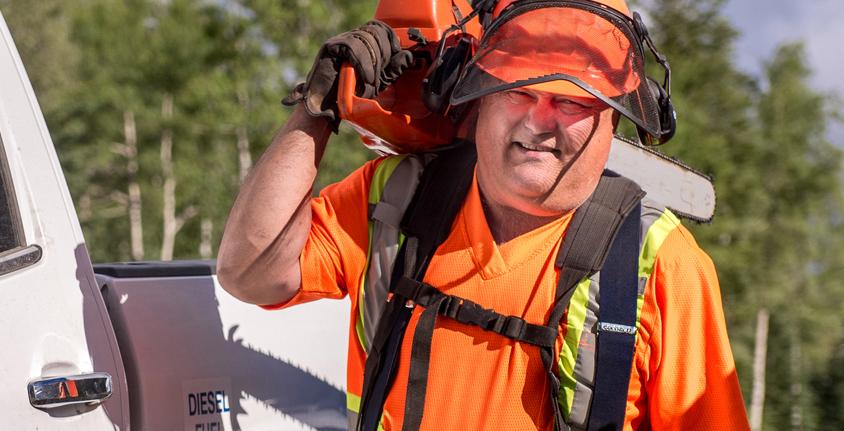
We want the communities where our projects are located to share in the economic benefits. One of the ways we do that is to request potential contractors prioritize hiring local and Indigenous businesses.
Long before work began on the Inland Gas Upgrades project in the Cranbrook, Sparwood and Mackenzie areas, we liaised with local Indigenous communities. The information we gathered helped inform our project requirements, which we circulated to potential contractors. This ensured local Indigenous businesses such as Nupqu and Duz Cho Construction were hired for the project.
The FortisBC Gas Line Upgrades project created skilled trade job opportunities with local companies Brymark Installations Group in Port Coquitlam and Jack Cewe Construction in Coquitlam.
Final steps: gas line start up and property restoration
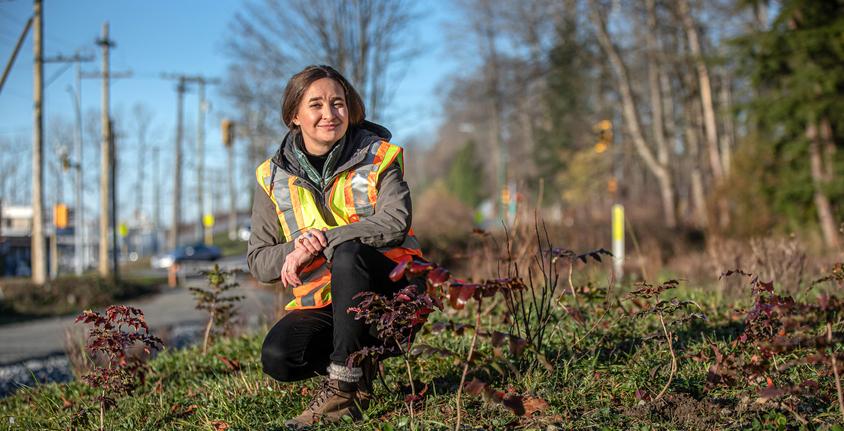
Once a new gas line has been built and tested, we put natural gas into it so it can start supplying homes and businesses. We may need to temporarily close lanes during this process to give crews the space they need to work safely. We may also need to erect sound-shielding barriers to lessen the “whooshing” sound as the natural gas enters the line for the first time.
The last step in a project is making sure we restore the areas where we work—such as roads, parking lots and residential properties—to the way they were before, or better.
“When our gas line right of way crosses private property, we talk to the property owner before work begins and work closely with them to find out how we can appropriately restore the area,” says Chris Coady, manager of property services. Chris recalls an occasion during the Surrey to Coquitlam gas line upgrades in 2017 when the construction team needed to use a church parking lot as a staging area. Prior to the start of work, the team spoke to the pastor of the church to find out how they could improve the parking lot when it was time to restore it. “Not only were we able to improve the parking lot by converting the gravel lot to pavement, we also made it safer,” he says. “At the church pastor’s request, we removed a cement island from the lot that was a safety hazard for drivers.”
Restoration also includes looking for ways to give back to local communities through community benefit projects. These projects are a way to thank communities for their patience during work in their area, such as the FortisBC Gas Line Upgrades. In Vancouver, we teamed up with the Commercial Drive Business Society to paint three Commercial Drive crosswalks with the red, white and green of the Italian flag—a nod to the area’s Italian heritage. In Burnaby, we created a lot of buzz by planting a pollinator garden near the foot of Burnaby Mountain to attract some of the more than 450 species of wild bees native to BC.
“Our work doesn’t end when construction is finished and the big equipment is gone,” notes Chris. “We’re there until the very end—until property restoration is complete.”
